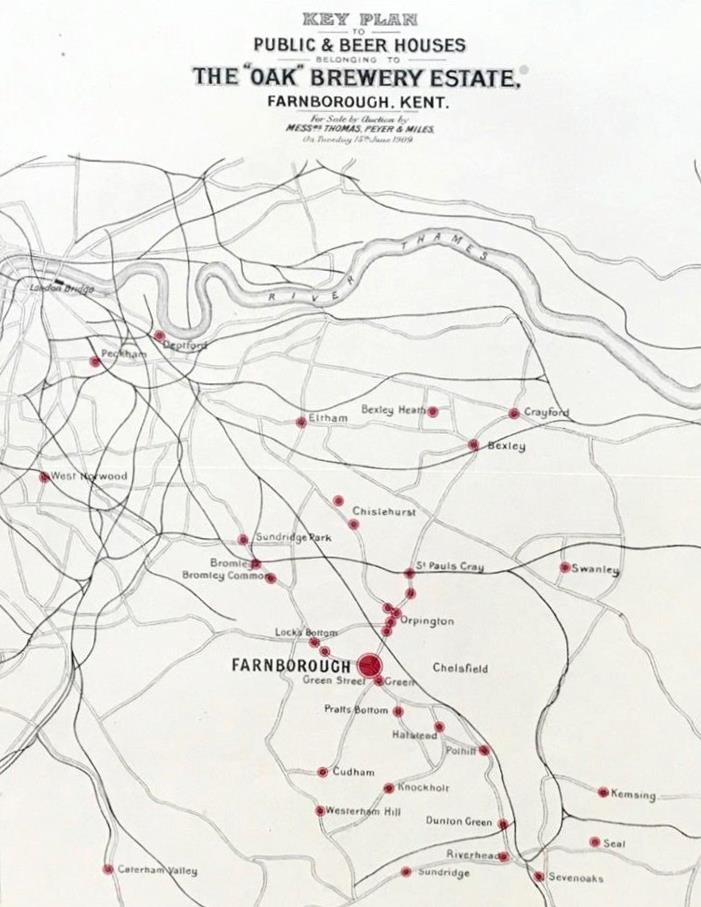


THE OAK BREWERY
The opening of Oak Brewery by Fox & Sons in 1836 was the first awakening of Green Street Green from a tiny hamlet on the old London to Hastings Road. Village life centred round the brewery until 1909 when it closed down.
The maps below identify the site using a map from toward the end of the nineteenth century, contrasted with the current view.
Note the addition of Farnborough bypass, which opened in 1927. Click to enlarge

This page contains material from the Fox & Sons page on the website www.breweryhistory.com, reproduced here with the permission of the author Peter Moynihan, who also wrote the book Kentish Brewers and the Brewers of Kent.
Development of the Brewery
In 1818, John Fox moved into Green Street Green with his family to run Oak Farm, situated just off the centre of the High Street. As most farmers did at that time, John brewed ale for himself and the farm workers, selling any surplus to his neighbours, including Sir John Lubbock of High Elms. Sir John often suggested that he would do better selling his superior ale commercially, rather than farming.
John Fox gradually increased the amount of ale he brewed until, in 1830, he decided to establish a proper brewery. By 1836 he was selling his ale commercially from a purpose-constructed building calling it the Oak Brewery.
|
|
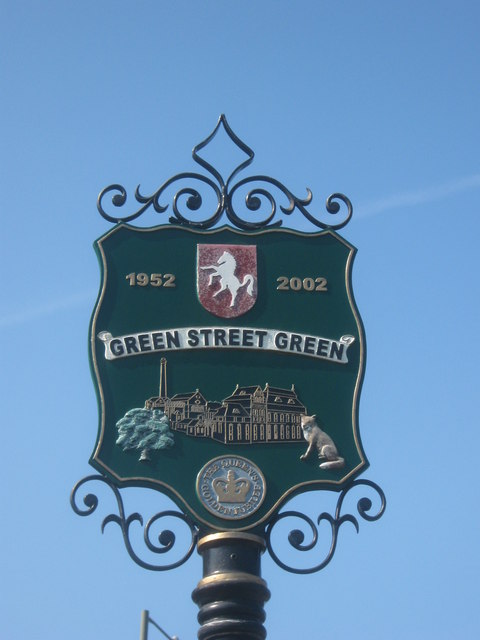 |
The brewery prospered, together with ownership of many pubs in the area, employing over 100 workers, and increased in size to cover approximately 4 acres. In 1851, John Fox built the first school and cottages for his key workers and provided a Club House for the church community.
It is not difficult to imagine the tremendous impact the brewery had on the little known hamlet of Green Street Green, which was only a few cottages in the High Street, when it all began. This is reflected in the village sign, erected in 2002.
The Fox Family
In 1836 Green Street Green was a hamlet of farm cottages, some at Oak Farm, where John Fox had helped his wife’s uncle Samuel Woodhams, since 1818 . Fox was born into farming in Bedfordshire in 1787 and later farmed in Hertfordshire. He married Susannah Beardsworth from Farnborough, Kent, and sons John Woodhams and William Beardsworth were born in 1815 and 1816, respectively.At Oak Farm another, Thomas Samuel was born in 1818. Samuel Woodhams died in 1825, leaving the farm to Susannah, who herself died in 1828, Oak Farm passing to John Fox and his children.
 |
| Fax Family Tree, Click to enlarge |
John Fox continued a tradition of brewing at Oak Farm, for himself, his farm-workers and neighbours. The latter included Sir John Lubbock, a friend and fellow-supporter of local education, churches and recreation, living one mile away at High Elms. Local spring water and brewing scientific expertise produced particularly high quality ale and, encouraged by friends, Fox decided to found the ‘Oak Brewery’ in 1836.
The business thrived, and the family built up a chain of public houses and beerhouses throughout south-east London and North Kent.
They also purchased a number of houses for the family and staff, including Beechwood in Green Street Green, the family home.
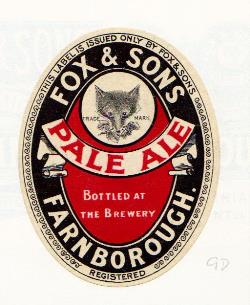 |
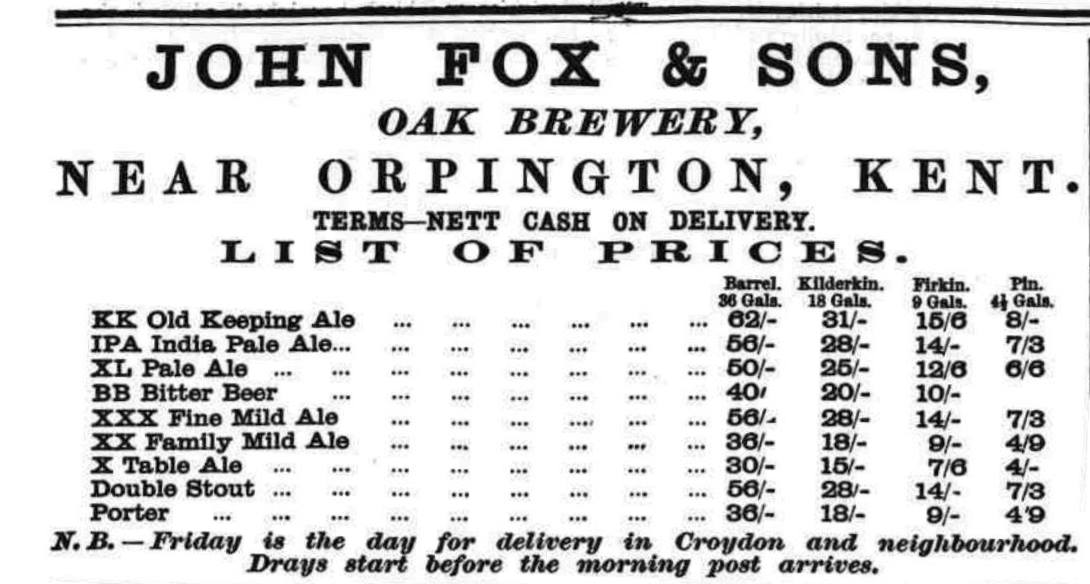 |
Until the 1830s, temperance organizations supported beer-drinking in their battle against the evils of gin. Later, when public houses were condemned for the drunkenness and excesses of the poor and working-classes, the Foxes, by then owners of most local public houses, experienced the dilemma of alleviating a social order problem for which they were partly to blame.
Nourishment and safety were qualities of beer, promoted by brewers and doctors alike during the nineteenth-century, as water was boiled during the brewing process.
 |
 |
The major paternalistic activities of John Fox and his family were to provide housing for workers, education for workers’ and local children, recreational and sporting amenities for workers and community, and to facilitate Anglican worship. However, William Beardsworth Fox, baptised into Anglicanism, became a Nonconformist and farmer in Chelsfield, helping to found a Methodist Chapel there. Later, he and sons William and Edwin became Congregationalists. When John Fox died in 1861, sons Thomas Samuel and John Woodhams continued brewing, until in 1883 the latter sold his share to his brother. Thomas Samuel died in 1886, leaving the brewery to sons Thomas Hamilton and Walter St. John, who ran it until its 1909 closure.
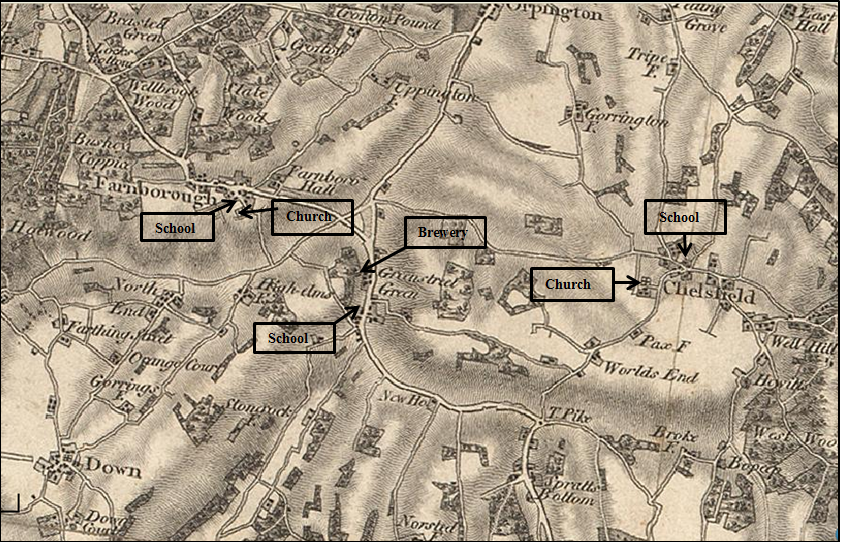 |
| Annotated Ordnance Survey map extract, First Series, Sheet 6, 1856 |
Financial Problems
However all was not as it seemed.Whilst Fox & Sons gave every impression of being a successful and prosperous concern the Fox brothers were, in fact, heavily in debt. Thomas Samuel Fox had borrowed £26,000 from the General Assurance Company in order to rebuild the brewery and by the time of his death had managed to reduce the debt to £16,000.
|
|
|
|
The company, by now consisting of the brewery, 29 public and beer houses as listed below, together with sundry other premises, was put up for auction in 1884. See panel to the right for more information about beerhouses.
| 1 | Green Street Green | The Rose and Crown | Public House | Leasehold |
| 2 | Orpington | The Maxwell Arms | Hotel | Freehold |
| 3 | Farnborough | The Coach and Horses | Beerhouse | Yearly Rent |
| 4 | Farnborough (Locksbottom) | The British Queen | Beerhouse | Freehold |
| 5 | Orpington | The Coach and Horses | Beerhouse | Freehold |
| 6 | Orpington | The Anchor and Hope | Beerhouse | Leasehold |
| 7 | Orpington | The Cricketers | Public House | Freehold |
| 8 | Orpington | The New Inn | Beerhouse | Leasehold |
| 9 | St. Paul's Cray | The Old Star | Public House | Leasehold |
| 10 | Chislehurst | The Bull's Head | Inn | Leasehold |
| 11 | Chislehusrt | The Gordon Arms | Beerhouse | Freehold |
| 12 | Pratts Bottom, Chelsfield | The Bull's Head | Public House | Leasehold |
| 13 | Knockholt | The Crown | Public House | Leasehold |
| 14 | Shoreham | The Polehill Arms | Inn | Leasehold |
| 15 | Dunton Green | The Duke's Head | Public House | Leasehold |
| 16 | Sundridge | The Victory | Beerhouse | Freehold |
| 17 | Riverhead | The Beehive | Beerhouse | Freehold |
| 18 | Sevenoaks | The Anchor | Beerhouse | Leasehold |
| 19 | Westerham Hill | The Fox and Hounds | Public House | Leasehold |
| 20 | Kemsing | The Wheatsheaf | Public House | Freehold |
| 21 | Swanley | The Hop Pole | Public House | Leasehold |
| 22 | Hayes | The Alma Arms | Beerhouse | Leasehold |
| 23 | Bromley, Masons Hill | The Tiger's Head | Inn | Leasehold |
| 24 | Bromley | The Forester | Beerhouse | Leasehold |
| 25 | Bromley | The Laurel | Beerhouse | Freehold |
| 26 | Eltham | The Park Tavern | Beerhouse | Leasehold |
| 27 | Crayford | The Duke Of Wellington | Public House | Leasheld |
| 28 | Upton. Bexley | The Royal Oak | Public House | Leasehold |
| 29 | Union Street, Deptford | The King of Prussia | Public House | Leasehold |
The sale included 25 acres of land in Green Street Green and elsewhere, comprising the brewery (including the offices and gas works) a farm , houses and stabling, plus sundry other land and cottages offered leasehold. This is the plan included with the aucrtion papers, it is dated 15th June 1909.

Evidently the sale failed, as the business continued trading, getting further into debt.
The Problems Intensify
After Thomas Fox died, his sons took over the business, but made precious little effort to repay the loan; in fact they borrowed a further £14,250 in 1891 and £4,000 in 1894. By 1906 they owed a total of £37,000 plus interest and a further £9,020 to their solicitor, both personally and professionally. Their only collateral for these loans was the company, which would have to be sold.Sale of the site with Vacant Possession
Although the brewery had closed the site remained intact.During the First World War it was used briefly as a barracks, see the photos in the panel to the right.
The brewerey site and all of the properties owned by the Fox family were put up for sale again in 1920, see An Unsettling Auction
|
|
|
|
By now the brewery consisted of just the brewery buildings, with about 4 acres of land.
The sale notice implied that some equipment was still at the site, but it was offered with vacant possession, 'suitable for use for a manufacturing business'.
 |
After a lengthy period of inactivity the buildings were partly demolished, starting in 1937 with the chimney. In 1940 just after the start of the second world war It became the site for the factory of Telcon Cables and later Telcon Plastics. The photos below date from 1988,
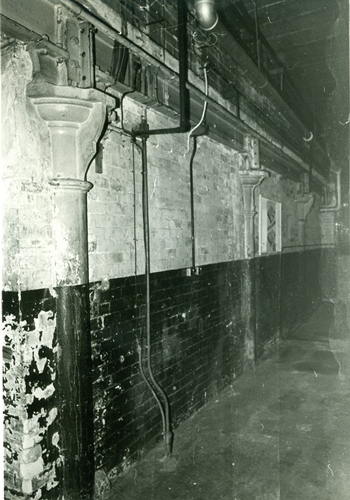 |
 |
Telcon occupied it through to about 1990. following which the site was fully cleared and utilised for a new housing estate, shown below. This stands opposite the parade of shops in which Waitrose, arriving in the 1970s, is the main supermarket.
|
|
THE LOCAL AREA
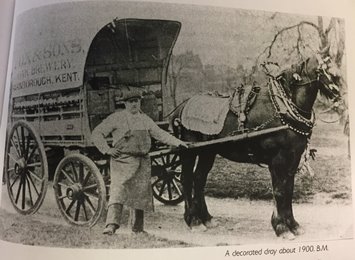


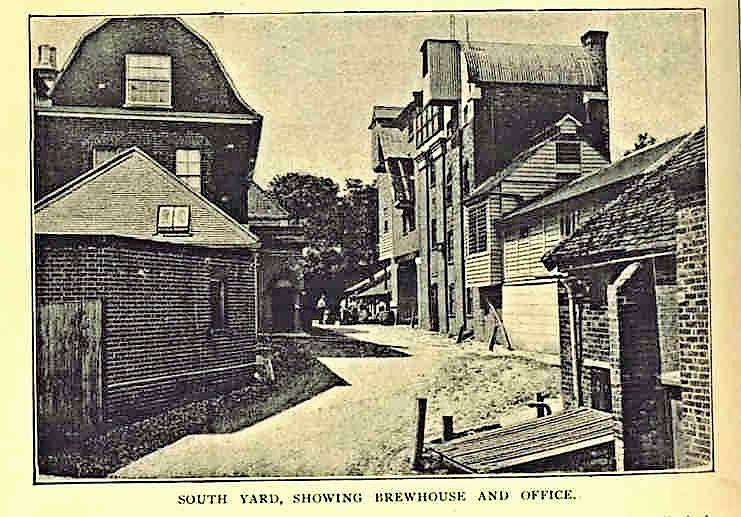


Experiments with Yeast
Thomas Hamilton Fox had an interest in the S.T. Ferment Co Ltd which had been set up to promote the use of a particular strain of yeast, patented by Grove Johnson and Percy Richard Hare, which could resist higher temperatures than the ordinary brewer’s yeast then in use. It was believed that it could speed up the fermentation of beer and thus effect economies in production costs.In 1905 a dedicated fermenter was installed at the Oak Brewery in which up to five barrels of Fox’s ordinary wort could be pitched with the new yeast strain. However, the results were not wholly successful; the yeast proved acceptable for dark beers but produced flavours that did not sit well with the delicate hop flavours of their paler ales. Although not a success at Farnborough, the yeast strain was used to good effect in breweries in hotter climes within the British Empire.
Beerhouses
The class of premises known as the beerhouse was abolished by act of legislation only in 1993, but the term had ceased to be uised many years before.The beerhouse was created by act of parliament in 1838. The purpose was to reduce the monopolies for selling beer previously held by public houses, and also to encourage the drinking of beer instead of strong liquors particularly gin, which was becoming a significant problem. Beerhouses could only sell beer, whereas Public Houses and hotels could also sell wine and spirits.
By 1841 licences under the new law had been issued to 45,500 premises, many were set up in private houses rather than commercial buildings
The passage of the Act during the reign of King William IV led to many taverns and public houses being named in his honour - he remains a popular monarch among pub names.
Read More
World War 1 Barracks
These photos date from 1915 after the brewery closed, when the buildings were used as barracks.
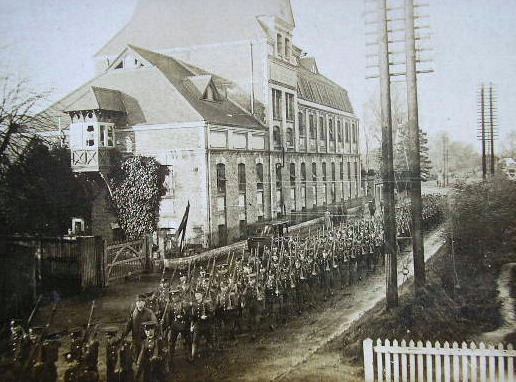

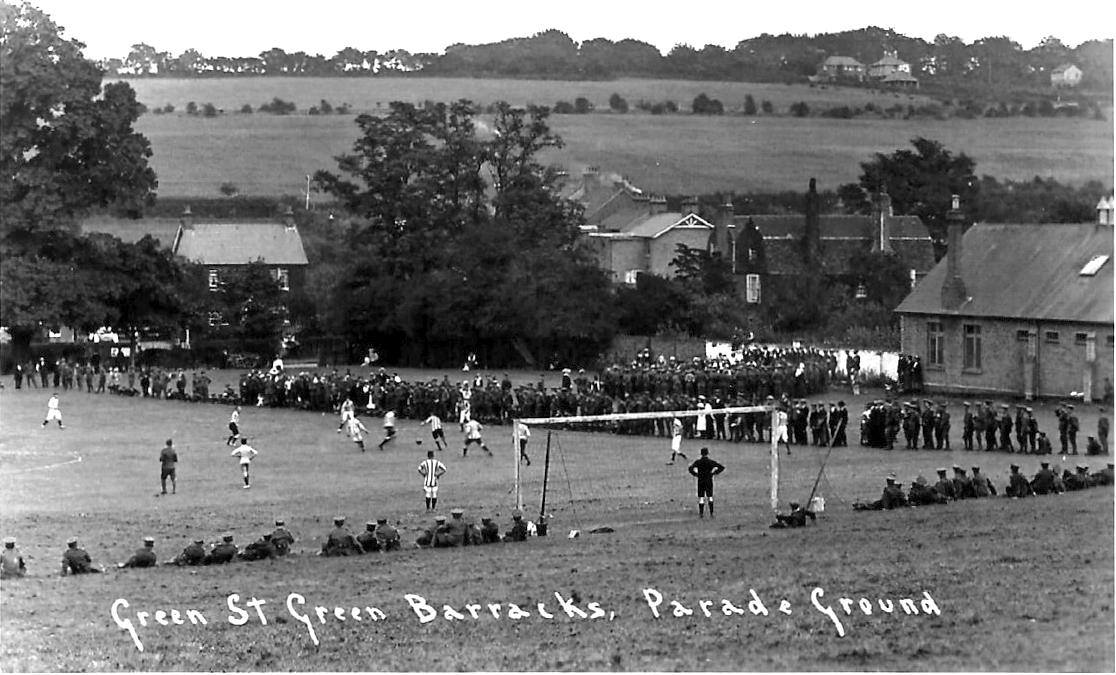
Fox burials at Farnborough
James Fox and his wife Susannah are buried in this grave topped by a large monument in the churchyard at St. Giles, together with their daughter Sarah Susannah, who died in 1829 aged 18 months, eight months after her mother.In this grave are also documented earlier burials with surname Cooper and Beardsworth. At the moment the relationship between the Cooper family and the Fox family members is not known. However Barbara Beardsworth is almost certainly related to Susannah Fox, as Beardsworth was Susannah's maiden name. There are two other Beardsworth burials in a further grave nearby.
William St. John Fox (bottom right in the family tree) died in 1928. He also has a grave at St. Giles but the location is unknown.
There is information from other sources
that his parents Thomas Samuel Fox and Rachel Mary Fox are also buried at St. Giles, most likely in the same grave as their son, but this has not yet been confirmed from church records.
